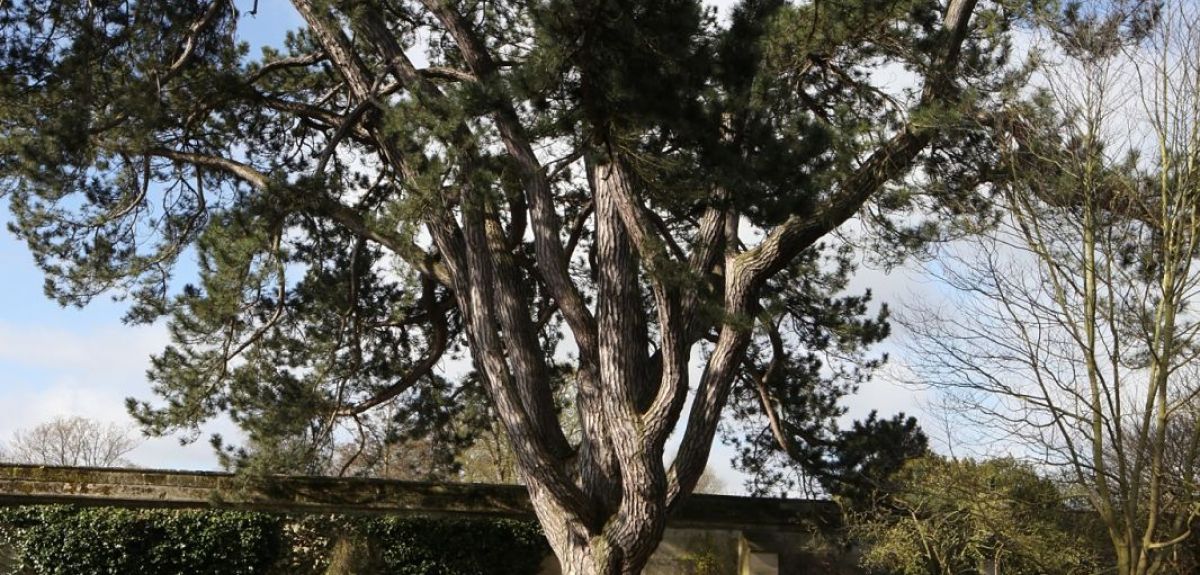
Botanic Garden bids farewell to iconic black pine
Oxford University's Botanic Garden is planning a send-off for the iconic black pine known as 'Tolkien's tree', which needs to be removed from the Garden after two limbs fell from the tree on Saturday.
The tree, a Pinus nigra, was a favourite of J R R Tolkien during his time in Oxford and some say its twisting branches resemble the 'ents' in his The Lord of the Rings novels.
Experts at Oxford City Council and Oxford University have decided the tree needs to be cut down. The decision was unavoidable but it does mean scientists can finally solve the mystery surrounding the tree.
Dr Stephen Harris of Oxford University’s Department of Plant Sciences explained: 'The received wisdom regarding the black pine is that it was planted in 1799 from seed that was collected by the Third Sherardian Professor of Botany, John Sibthorp, in Austria.
'We know that Sibthorp sent considerable amounts of plant material to Oxford from the eastern Mediterranean in 1786/87 and that he was in Austria in 1785. He was also in regions of Black Pine growth in 1795 but he died in 1796.
'If the story of the Black Pine is true then it should be at least 215 years old. The pine having to be cut down means that we have the opportunity to date the tree precisely and determine whether Sibthorp is likely to have been involved. The particular subspecies of Black Pine represented by the tree has also been a point of controversy - we should now be able to settle this controversy as well.'
The Garden has rigorous safety checks in place and every tree in the Garden is inspected annually. The area around the tree was evacuated before the limbs fell. The Garden will remain open while the work takes place, but the area around the tree will be cordoned off for the next few weeks.
Dr Alison Foster, acting director of the Garden, said: 'The black pine was a highlight of many people's visits to the Botanic Garden and we are very sad to lose such an iconic tree. We intend to propagate from this magnificent tree so that future generations will not miss out on this important link to Tolkien. We are considering using the wood from the black pine for an educational project along the lines of the One Oak project and hope to hold a celebratory event to commemorate the tree and its many associations in due course.
'I'd like to praise my staff for taking swift action to evacuate the area before the limbs fell from the tree and we assure visitors that all the trees in the Garden are subject to annual inspections by experts. The Garden will remain open over the next few weeks but the area near the tree will be inaccessible while work takes place. We apologise to visitors for the inconvenience this causes and we hope to reopen the entire Garden as soon as possible.'
Dr Stuart Lee, an English academic at Oxford University who has studied the fiction and manuscripts of Tolkien and ran the 2013 Tolkien Spring School in Oxford, said: 'Tolkien hated the wanton destruction of trees for no reason but it sounds to me like this is for all the right reasons so whilst this is sad news, it is inevitable.
'It is often said that the black pine inspired the 'ents' in Lord of the Rings, and it may be he liked the tree and saw something it in that inspired Treebeard, but in fact the ‘ents’ have many sources and ‘ent’ means giant in Old English, and Tolkien’s love of trees goes all the way back to his childhood.'